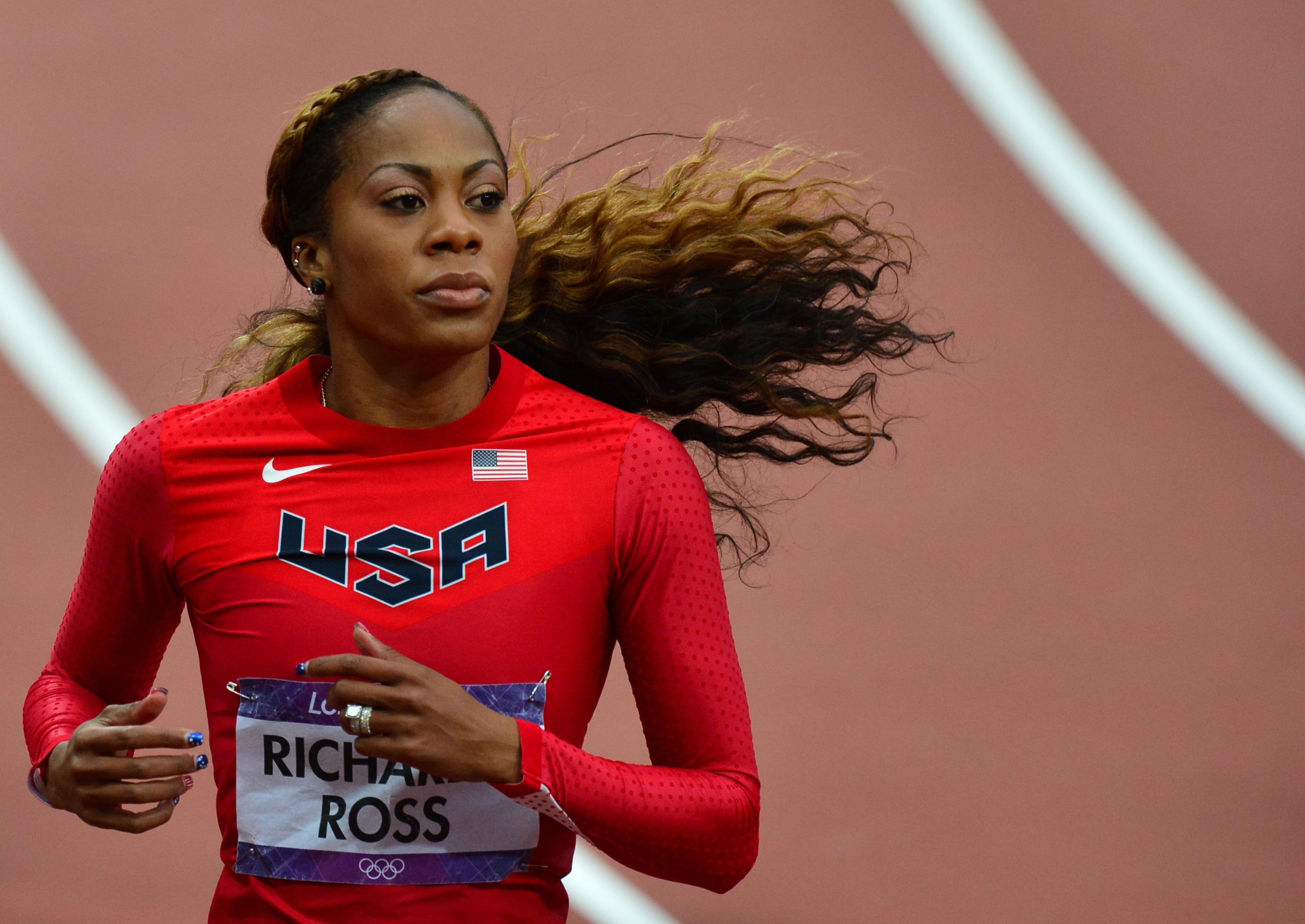On Sunday, Sanya Richards-Ross came across the line first in the women’s 400-meter dash. Coming in just behind the American runner was her plenteous, billowing hair, which finished about a body length ahead of runner-up Christine Ohuruogu and her hair. “It’s very, very challenging to get on the Olympic stage and give your best performance, to balance your emotions and the physical,” said Richards-Ross after the event, as her hair looked on silently. “It’s a huge weight off my shoulders.”
But what about the non-metaphorical weight on her shoulders? If you’re a sprinter, does all that hair blowing in the wind slow you down?
Yes, but only slightly. Whenever air flows around a speeding projectile—be it a shot put or a runner’s body—aerodynamic principles come into play. A 100-meter sprinter can use up to 20 percent of her total energy expenditure overcoming air resistance, or the drag exerted on her frame due to friction between her and the air. (A 400-meter runner, who’s traveling more slowly, would use a bit less energy to fight through the air.)
Flowing locks increase air resistance insofar as they boost a runner’s surface area. More hair creates more opportunities for friction between the runner and the air, so a full-headed athlete would have to work harder to maintain the same speed as a bald one. And since Olympic sprinters are already close to maxing out in terms of effort, any situation that requires them to do more work has the potential to extend their times.
But hair is pretty light, so athletes know it’s the styling, not the quantity, of their tresses that could dash their hopes. Hairdos like ponytails, braids, and or buns, which comb the mane behind the neck, have little effect on overall surface area, while hair that sticks out from the sides of the head increase it (and might also whip into the runner’s eyes). On Sunday, Richards-Ross wore her hair in a “half-back” style, with strands streaming loose behind her. This get-up was more streamlined than it looked, because the wind caught Richards-Ross’ face before it made contact with her locks.
Still, even the most unruly hair is unlikely to make a major difference. Imagine that you are a 400-meter sprinter who uses 10 percent of your total energy battling air resistance. Imagine, too, that you increased your total surface area by 10 percent (a generous assumption) by letting your hair fly free. Drag and surface area are directly proportional—you can check out the equation—so you would be increasing the force of air resistance by 10 percent by untying your ponytail. That means you would need to spend 10 percent more energy overcoming air resistance, a task that itself accounts for 10 percent of your total effort. The bottom line? You would need to exert 1 percent—10 percent of 10 percent—more effort with your hair down than with your hair up.
Another thing to consider is that air resistance depends on a runner’s speed, becoming a non-negligible factor when you’re moving at around 15 miles per hour. The current women’s world record in the 400-meter dash, held by East Germany’s Marita Koch at 47.60 seconds, clocks in at an average of 18.8 miles per hour. On Sunday, Richards-Ross was sprinting at about 18.1 miles per hour, a pace at which air resistance might factor in, but only a tiny bit.
Could voluminous hair ever act as a sail in a tailwind and actually enhance a runner’s time? Only if the wind were travelling faster than the athlete, which would be unusual, since the average wind speed in London is about 10.4 miles per hour.
